- Home
- Isaac Asimov
Of Time and Space and Other Things
Of Time and Space and Other Things Read online
Of Time and Space and Other Things
Isaac Asimov
Isaac Asimov
Of Time and Space and Other Things
Introduction
As we trace the development of man over the ages, it seems in many respects a tale of glory and victory; of the develop ment of the brain; of the discovery of fire; of the building of cities and of civilizations; of the triumph of reason; of the fimng of the Earth and of the reaching out to sea and space.
But increasing knowledge leads not to conquest only, but to utter defeat as well, for one learns not only of new po tentialities, but also of new limitations. An explorer may discover a new continent, but he may also stumble over the world's end.
And it is so with mankind. We are distinguished from all other living species by our power over the inanimate universe; and we are distinguished from them also by our abject defeat by the inanimate universe, for we alone have learned of defeat.
Consider that no other species (as far as we know) can possess our concept of time. An animal may remember, but surely it can have no notion of "past" and certainly not of "future."
No non-human creature lives in anything but the present moment. No non-human creature can foresee the inevita bility of its own death. Only man is mortal, in the sense that only man is aware that he is mortal.
Robert Bums said it better in his poem To a Mouve.
He addresses the mouse, after turning up its nest with his plough, apologizing to it for the disaster he has brought upon it, and reminding it fatalistically that "The- best-laid schemes o' mice and men / Gang aft a-gley."
But then, in a final soul-chilling stanza (too often lost in the glare of the much more famous penultimate stanza about mice and men), he gets to the real nub of the poem and says:
"Still thou art blest compar'd wi' me!
"The present only toucheth thee:
"But oh, I backward cast my e'e
"On prospects drear!
"An' forward tho' I canna see,
"I guess an' fear!"
Somewhere, then, in the progress of evolution from mouse to man, a primitive hominid first caught and grasped at the notion that someday he would die. Every living crea ture died at last, our proto-philosopher could not help but notice, and the great realization somehow dawned upon him that he himself would do so, too. If death must come to all life, it must come to himself as well, and ahead of him he saw world's end.
We talk often about the discovery of fire, which marked man off from all the rest of creation. Yet the discovery of death', is surely just as unique and may have been just as driving a force in man's upward climb.
The details of both discoveries are lost forever in the shrouded and impenetrable fog of pre-history, but they appear in myths. The discovery of fire is celebrated most famously in the Greek myth of Prometheus, who stole fire from the Sun for the poor, shivering race of man.
And the discovery of death is celebrated most famously in the Hebrew myth of the Garden of Eden, where man first dwelt in the immortality that came of the ignorance of time. But man gained knowledge, or, if you prefer, he ate of the fruit of the tree of knowledge of good and evil.
And with knowledge, death entered the world, in the sense that man knew he must die. In biblical terms, this awareness of death is described as resulting from divine revelation. In the 'solemn speech in which He apprises
Adam of the punishment for disobedience, God tells him (Gen. 3:19): for dust thou art, and unto dust shalt thou return."
But man struggles onward under the terrible weight of
Adam's curse, and I cannot help but wonder how much of man's accomplishment traces directly back to his en deavor to neutralize the horrifying awareness of inevitable death. He may transfer the consciousness of existence from himself to his family and find immortali,ty after all in the fact that though his own spark of life snuffs out, an allied spark continues in the children that issued out of his body.
How much of tribal society is based on this?
Or he may decide that the true life is not of the body which is, indeed, mortal and must suffer death; but of the spirit which lives forever. And how much of philosophy and religion and the highest aspirations of man's faculties arises from this striving to deny Adam's curse?
Yet what of a society in which the notion of family and of spirit weakens; a society in which the material world of the senses gradually fills the consciousness from horizon to horizon? The nearest approach-to such a society in man's history is probably our own. How, then, has the modern
West, which has deprived itself of the classical escapes, re acted to the inevitability of death?
Is it entirely a coincidence that of all cultures, that of the present-day West is the most time-conscious? That it has spent more of its energies in studying time, measuring time, cutting time up into ever-tinier segments with ever greater accuracy?
Is it entirely a coincidence that the most materialistic subdivision of our most materialistic culture, the twentieth century American, is never seen anywhere without, his wristwatch? At no time, apparently, dare he be unaware of the sweep of the second hand and of the ticks that mark off the inexorable running out of the sands of his life.
So it is that the opening essays in this collection deal directly with man's attempt to measure time. The notion of time creeps into a number of the other essays as well; in a discussion of units which turn out always to include the "second"; in a discussion of catalysts which squeeze more action into less time. For really, time is a subject that cannot be entirely excluded from any; corner of science.
When man faces death directly, then, he studies time, for it is by accurately handling time that he can measure other phenomena and find a route through science. And through science, perhaps, may come a truly materialistic defeat of Adam's curse.
For my final essay in this book takes up the inevitability of death, and the conclusion is that though all men are mortal, they are not nearly as mortal as they ought to be.
Why not? That is the chink in death's armor. Why does man live as surprisingly long as he does? If we can some day find the answer to that, we may find the answer to much more.
Immortality?
Who knows, but-maybe!
Part I
Of Time And Space
1. The Days Of Our Years
A group of us meet for an occasional evening of, talk and nonsense, followed by coffee and doughnuts and one of the group scored a coup by persuading a well-known entertainer to attend the session. The well-known enter tainer made one condition, however. He was not to enter tain, or even be asked to entertain. This was agreed to.
Now there arose a problem. If the meeting were left to,its own devices, someone was sure to begin badgering the entertainer. Consequently, other entertainment had to be supplied, so one of the boys turned to me and said,
"Say, you know what?" l,knew what and I objected at once. I said, "How can
I stand up there and talk with everyone staring at this other fellow in the audience and wishing he were up there instead? You'd be throwing me to the wolves!"
But they all smiled very toothily and told me about the wonderful talks I give. (Somehow everyone quickly dis covers the fact that I soften into putty as soon as the flat tery is turned on.) In no time at all, I agreed to be thrown to the wolves. Surprisingly, it worked, which speaks highly for the audience's intellect-or perhaps their magnanimity.
I As it happened, the meeting was held on "leap day" and so my topic of conversation was ready-made and the gist of it went as follows:
I suppose there's no question but that the earliest unit of time-telling was the day. It forces itself upon the aware ness of even t
he most primitive of humanoids. However, the day is not convenient for long intervals of time. Even allowing a primitive Iife-span of @ years, a man would live some 11,000 days and it is very easy to lose track among all those days.
Since the Sun governs the day-unit, it seems natural to turn to the next most prominent heavenly body, the Moon, for another unit. One offers itself at once, ready-made the period of the phases. The Moon waxes from nothing to a full Moon and back to nothing in a definite period of time. This period of time is called the "month" in English
(clearly from the word "mooif') or, more specifically, the
"lunar month," since we have other months, representing periods of time slightly shorter or slightly longer than the one that is strictly tied to the phases of the moon.
The lunar month is roughly equal to 291/2 days. More exactly, it is equal to 29 days, 12 hours, 44 minutes, 2.8 seconds, or 29.5306 days.
In pre-agricultural times, it may well have been that no, special significance attached itself to the month, which re mained only a convenient device for measuring moderately long periods of time. The life expectancy of primitive man was probably something like 350 months, which is a much more convenient figure than that of I 1,000 days.
In fact, there has been speculation that the extended lifetimes of the patriarchs reported in the fifth chapter of the Book of Genesis may have arisen out of a confusion of years with lunar months. For instance, suppose Me thuselah had lived 969 lunar months. This would be just about 79 years, a very reasonable figure. However, once that got twisted to 969 years by later tradition, we gained the "old as Methuselah" bit.
However, I mention this only in passing, for this idea is not really taken seriously by any biblical scholars. It is much more likely that these lifetimes are a hangover from
Babylonian traditions about the times before the Flood.
…But I am off the subject.
It is my feeling that the month gained a new and enhanced importance with the introduction of agriculture.
An agricultural society was much more closely and pre cariously tied-to the season amp; than a hunting or herding society was. Nomads could wander in search of grain or grass but farmers had to stay where they were and hope for rain. To increase their chances, farmers had to be cer tain to sow at a proper time to take advantage of sea sonal rains and seasonal warmth; and a mistake in the sowing period might easily spell disaster. What's more, the development of agriculture made possible a denser popu lation, and that intensified the scope of the possible dis aster.
Man had to pay attention, then, to the cycle of seasons, and while he was still in the prehistoric stage he must have noted that those seasons came fall cycle in roughly twelve months. In other words, if crops were planted at a par ticular time of the year and all went well, then, ff twelve months were counted from the first planting and crops were planted again, all would again go well.
Counting the months can be tricky in a primitive so ciety, especially when a miscount can be ruinous, so it isn't surprising that the count was usually left in the hands of a specialized caste, the priesthood. The priests could not only devote their time to accurate counting, but could also use their experience and skill to propitiate the gods.
After all, the cycle of the seasons was by no, means as rigid and unvarying as was the cycle of day and night or the cycle of the phases of the moon. A late frost or a failure of rain could blast that season's crops, and since such flaws in weather were bound to follow any little mista e in ritual (at least so men often believed), the priestly func tions were of importance indeed.
It is not surprising then, that the lunar month grew to have enormous religious significance. There were new
Moon festivals and special priestly proclamations of each one of them, so that the lunar month came to be called the "synodic month."
The cycle of seasons is called the "year" and twelve lunar months therefore make up a "lunar year." The use of lunar years in measuring time is referred to as the use of a "lunar calendar." The only important group of people in modem times, using a strict lunar calendar, are the Moh ammedans. Each of the Moharmnedan years is made up of 12 months which are, in turn, usually made up of 29 and 30 days in alternation.
Such months average 29.5 days, but the length of the true lunar month is, as I've pointed out, 29.5306 days.
The lunar year built up out of twelve 29.5-day months is 354 days long, whereas twelve lunar months are actually 354.37 days long.
You may say "So what?" but don't. A true lunar year should always start on the day of the new Moon. If, how ever, you start one lunar year on the day of the new Moon and then simply alternate 29-day and 30-day months, the third year will start the day before the new Moon, and the sixth year will start two days before the new Moon. To properly religious people, this would be unthinkable.
Now it so happens that 30 true lunar years come out to be almost exactly an even number of days-10,631.016.
Thirty years built up out of 29.5-day months come to
10,620 days-just 1 1 days short of keeping time with the
Moon' For that reason, the Mohammedans scatter 1 1 days through the 30 years in some fixed pattern which prevents any individual year from starting as much, as a full day ahead or behind the new Moon. In each 30-year cycle there are nineteen 354-day years and eleven 355-day years, and the calendar remains even with the Moon.
An extra day, inserted in this way to keep the calendar even with the movements of a heavenly body, is called an
"intercalary day"; a day inserted "between the calendar," so to speak.
The lunar year, whether it is 354 or 355 days in length, does not, however, match the cycle of the seasons. By the dawn of historic times the Babylonian astronomers had noted that the Sun moved against the background of stars
(see Chapter 4). This passage was followed with absorp tion because it grew apparent that a complete circle of the sky by the Sun matched the complete cycle of the seasons closely. (This apparent influence of the stars on the sea sons probably started the Babylonian fad of astrology which is still with us today.)
The Sun makes its complete cycle about the zodiac in roughly 365 days, so that the lunar year is'about II days shorter than the season-cycle, or "solar year." Three lunar years fall 33 days, or a little more than a full month be hind the season-cycle.
This is important. If you use a lunar calendar and start it so that the first day of the year is planting time, then three years later you are planting a month too soon, and by the time a decade has passed you are planting in mid winter. After 33 years the first day of the year is back where it is supposed to be, having traveled through the entire solar year.
This is exactly what happens in the Mohammedan year. The ninth month of the Mohammedan year is named
Ramadan, and it is especially holy because it was the month in which Mohammed began to receive the revela tion of the Koran. In Ramadan, therefore, Moslems ab stain from food and water during the daylight hours.
But each year, Ramadan falls a bit earlier in the cycle of the seasons, and at 33-year intervals it is to be found in the hot season of the year; at this time abstaining from drink is particularly wearing, and Moslem tempers grow particularly short.
The Mohammedan years are numbered from the Hegira; that is, from the date when Mohammed fled from Mecca to Medina. That event took place in A.D. 622. Ordinarily, you nught suppose, therefore, that to find the number of the Mohammedan year, one need only subtract 622 from the number of the Christian year. This is not quite so, since the Mohammedan year is shorter than ours. I write this chapter in A.D. 1964 and it is now 1342 solar years since the Hegira. However, it is 1384 lunar years since the
Hegira, so that, as I write, the Moslem year is A.H. 1384.
I've calculated that the Mohammedan year will catch up to the Christian year in about nineteen millennia. The year A.D. 20,874 will also be A.H. 20,874, and the Moslems will then be able to switch to our year with a minimum of trouble.
&nbs
p; But what can we do about the lunar year in order to make it keep even with the seasons and the solar year? We can't just add II days at the end, for then the next year would not start with the new Moon and to the ancient
Babylonians, for instance, a new Moon start was essential.
However, if we start a solar year with the new Moon and wait, we will find that the twentieth solar year there after starts once again on the day of the new Moon. You see, 19 solar years contain just about 235 lunar months.
Concentrate on those 235 lunar months. That is equiva lent to 19 lunar years (made up of 12 lunar months each) plus 7 lunar months left over. We could, then, if we wanted to, let the lunar years progress as the Moham medans do, until 19 such years had passed. At this time the calendar would be exactly 7 months behind the sea sons, and by adding 7 months to the 19th year (a 19th year of 19 months-very neat) we could start a new 19 year cycle, exactly even with both the Moon and the sea sons.
The Babylonians were unwilling, however, to let them selves fall 7 months behind the seasons. Instead, they added that 7-month discrepancy through the 19-year cycle, one month at a time and as nearly evenly as possible. Each cycle had twelve 12-month years and seven 13-montb years. The "intercalary month" was added in the 3rd, 6th, 8tb, I lth, 14th, 17th, and 19th year of each cycle, so that the year was never more than about 20 days behind or ahead of the Sun.
Such a calendar, based on the lunar months, but gim micked so as to keep up with the Sun, is a "lunar-solar calendar."
The Babylonian lunar-solar calendar was popular in ancient times since it adjusted the seasons while preserving the sanctity of the Moon. The Hebrews and Greeks both adopted this calendar and, in fact, it is still the basis for the Jewish calendar today. The individual dates in the
Jewish calendar are allowed to fall slightly behind the Sun until the intercalary month is added, when they suddenly shoot slightly ahead of the Sun. That is why holidays like

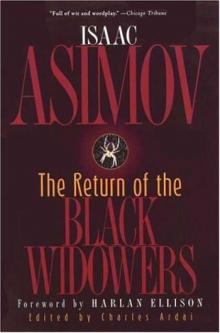 The Return of the Black Widowers
The Return of the Black Widowers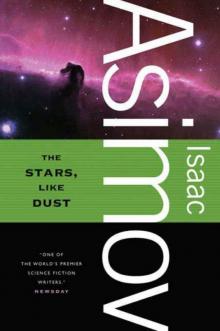 The Stars, Like Dust
The Stars, Like Dust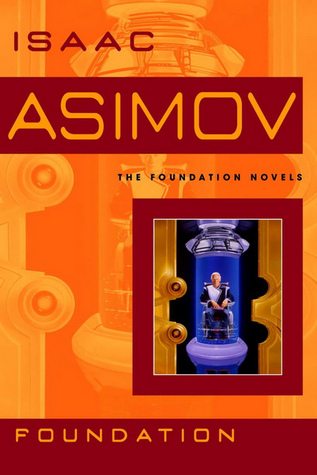 Foundation
Foundation David Starr Space Ranger
David Starr Space Ranger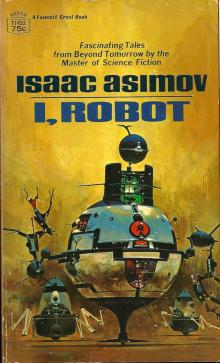 I, Robot
I, Robot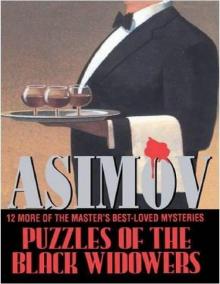 Puzzles of the Black Widowers
Puzzles of the Black Widowers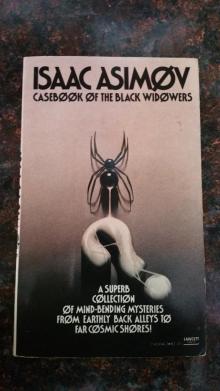 Casebook of the Black Widowers
Casebook of the Black Widowers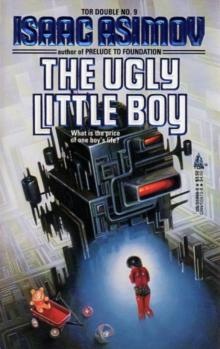 The Ugly Little Boy
The Ugly Little Boy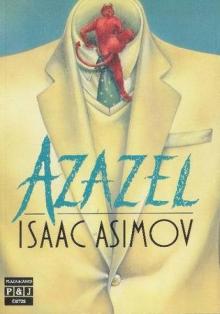 Azazel
Azazel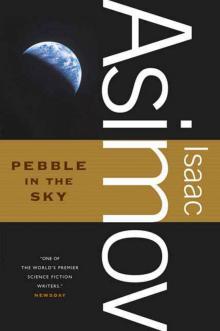 Pebble in the Sky
Pebble in the Sky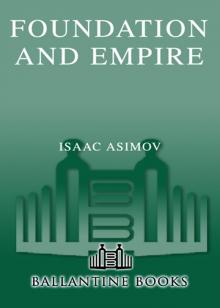 Foundation and Empire
Foundation and Empire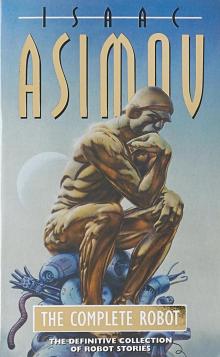 The Complete Robot
The Complete Robot Fantastic Voyage
Fantastic Voyage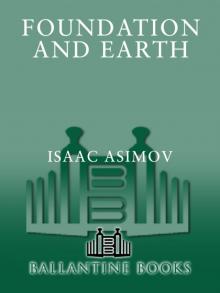 Foundation and Earth
Foundation and Earth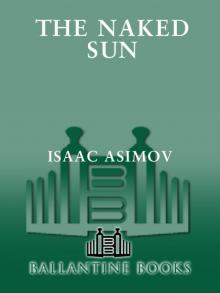 The Naked Sun
The Naked Sun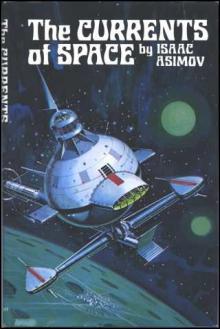 The Currents of Space
The Currents of Space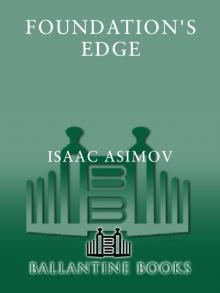 Foundation's Edge
Foundation's Edge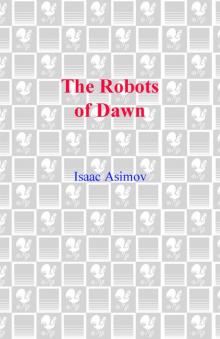 The Robots of Dawn
The Robots of Dawn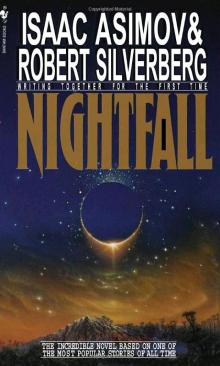 Nightfall
Nightfall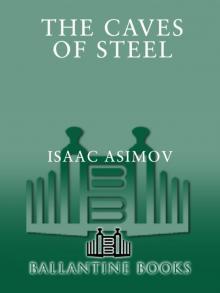 The Caves of Steel
The Caves of Steel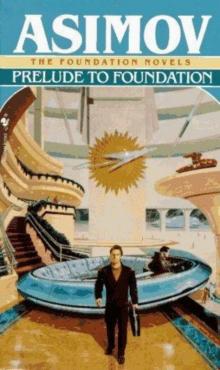 Prelude to Foundation
Prelude to Foundation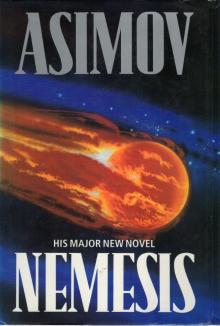 Nemesis
Nemesis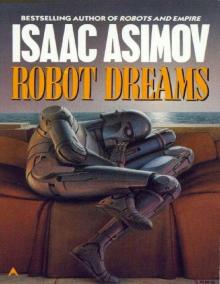 Robot Dreams
Robot Dreams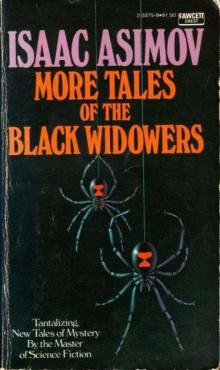 More Tales of the Black Widowers
More Tales of the Black Widowers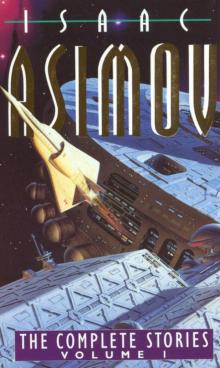 The Complete Stories
The Complete Stories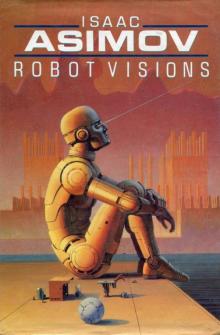 Robot Visions
Robot Visions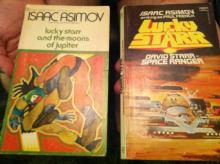 Lucky Starr And The Moons of Jupiter
Lucky Starr And The Moons of Jupiter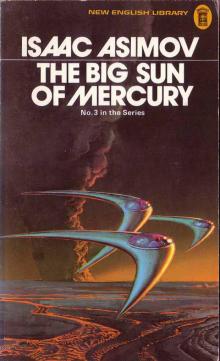 Lucky Starr and the Big Sun of Mercury
Lucky Starr and the Big Sun of Mercury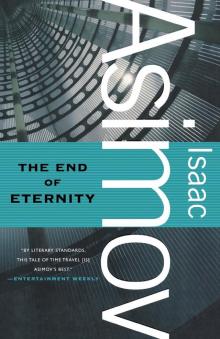 The End of Eternity
The End of Eternity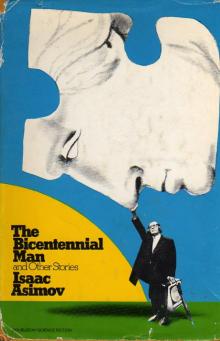 The Bicentennial Man and Other Stories
The Bicentennial Man and Other Stories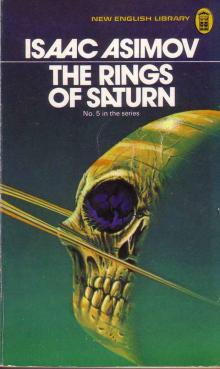 Lucky Starr And The Rings Of Saturn
Lucky Starr And The Rings Of Saturn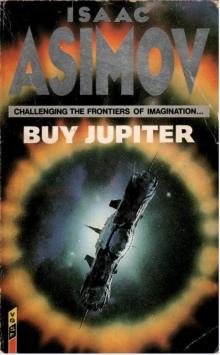 Buy Jupiter and Other Stories
Buy Jupiter and Other Stories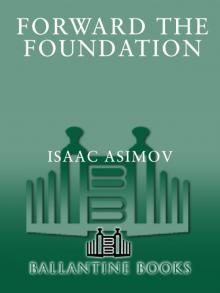 Forward the Foundation
Forward the Foundation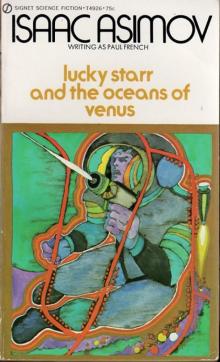 Lucky Starr and the Oceans of Venus
Lucky Starr and the Oceans of Venus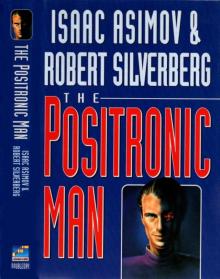 The Positronic Man
The Positronic Man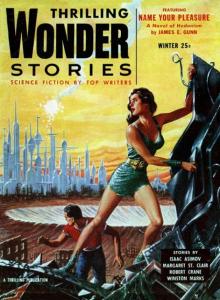 The Portable Star
The Portable Star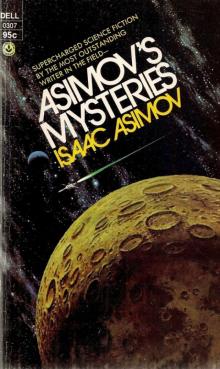 Asimovs Mysteries
Asimovs Mysteries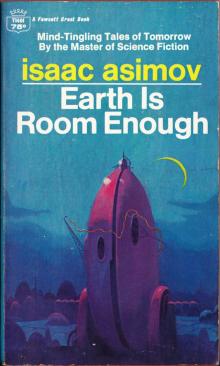 Earth Is Room Enough
Earth Is Room Enough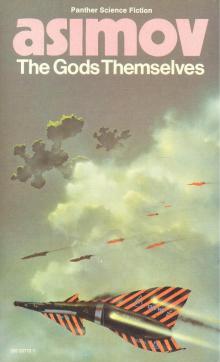 The Gods Themselves
The Gods Themselves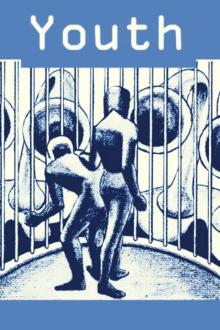 Youth
Youth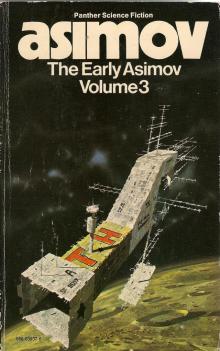 The Early Asimov Volume 3
The Early Asimov Volume 3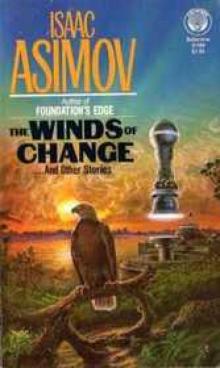 The Winds of Change and Other Stories
The Winds of Change and Other Stories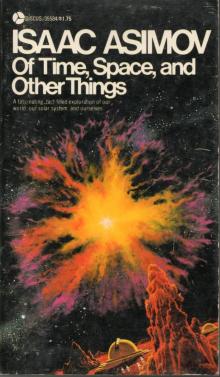 Of Time, Space, and Other Things
Of Time, Space, and Other Things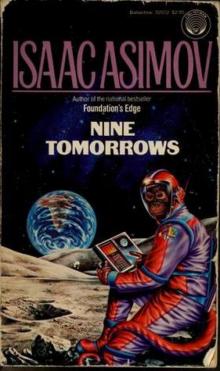 Nine Tomorrows
Nine Tomorrows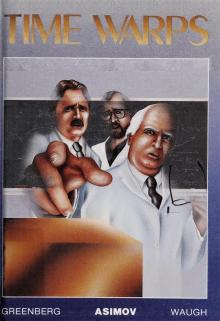 Time Warps
Time Warps Robots and Empire
Robots and Empire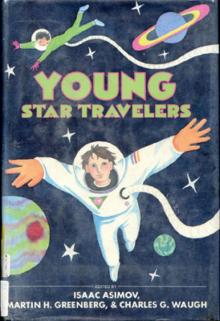 Young Star Travelers
Young Star Travelers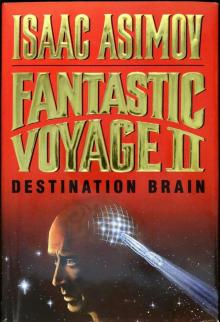 Fantastic Voyage II: Destination Brain
Fantastic Voyage II: Destination Brain Second Foundation
Second Foundation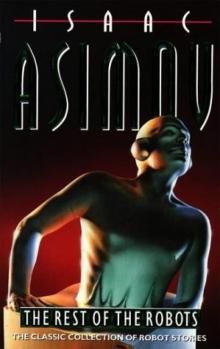 The Rest of the Robots
The Rest of the Robots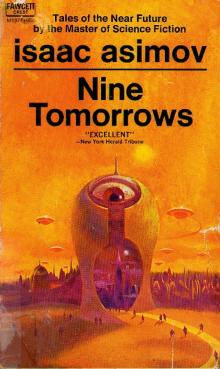 NINE TOMORROWS Tales of the Near Future
NINE TOMORROWS Tales of the Near Future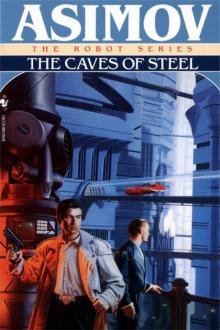 Daneel Olivaw 1 - The Caves of Steel
Daneel Olivaw 1 - The Caves of Steel THE BICENTENNIAL MAN
THE BICENTENNIAL MAN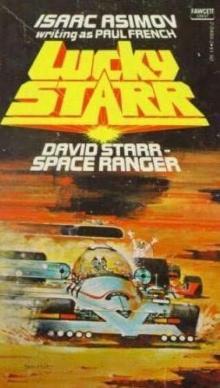 David Starr Space Ranger (lucky starr)
David Starr Space Ranger (lucky starr)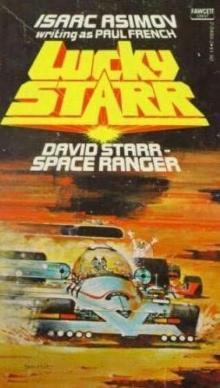 David Starr Space Ranger (ls)
David Starr Space Ranger (ls)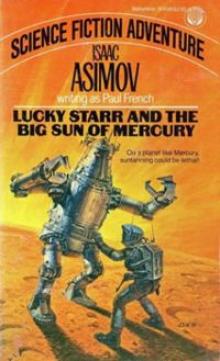 Lucky Starr And The Big Sun Of Mercury ls-4
Lucky Starr And The Big Sun Of Mercury ls-4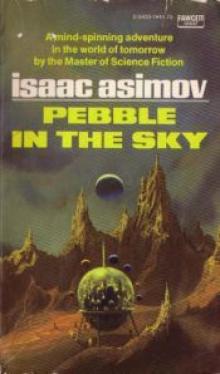 Pebble In The Sky te-1
Pebble In The Sky te-1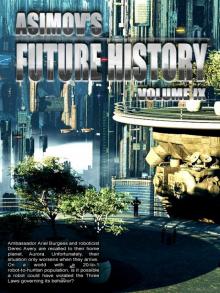 Asimov’s Future History Volume 9
Asimov’s Future History Volume 9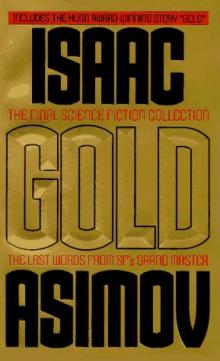 Gold: The Final Science Fiction Collection
Gold: The Final Science Fiction Collection Foundation and Earth f-7
Foundation and Earth f-7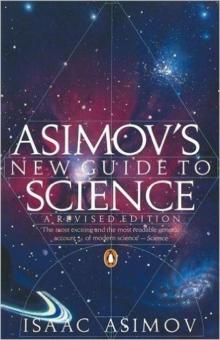 Asimov's New Guide to Science
Asimov's New Guide to Science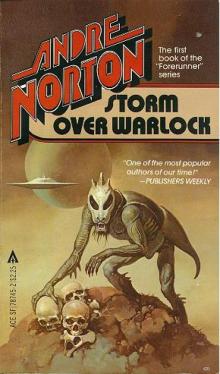 STORM OVER WARLOCK
STORM OVER WARLOCK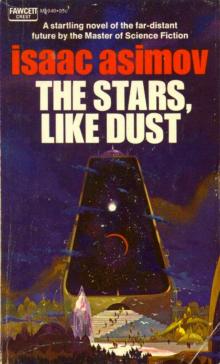 Stars, Like Dust
Stars, Like Dust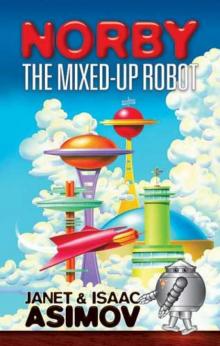 Norby The Mixed-Up Robot
Norby The Mixed-Up Robot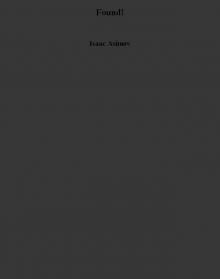 Found!
Found!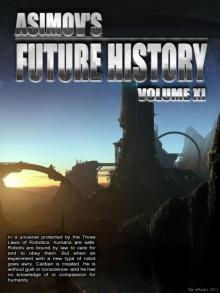 Asimov’s Future History Volume 11
Asimov’s Future History Volume 11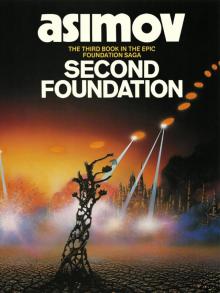 Second Foundation f-5
Second Foundation f-5 Asimov’s Future History Volume 15
Asimov’s Future History Volume 15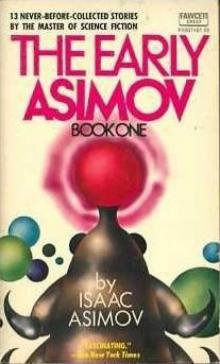 The Early Asimov. Volume 1
The Early Asimov. Volume 1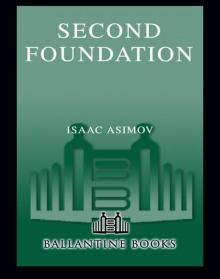 Secound Foundation
Secound Foundation Daneel Olivaw 3 - The Robots of Dawn
Daneel Olivaw 3 - The Robots of Dawn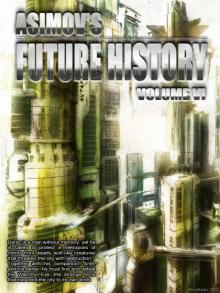 Asimov’s Future History Volume 6
Asimov’s Future History Volume 6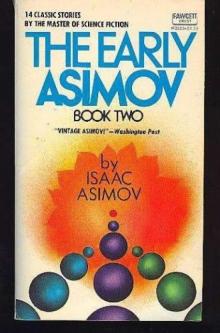 The Early Asimov. Volume 2
The Early Asimov. Volume 2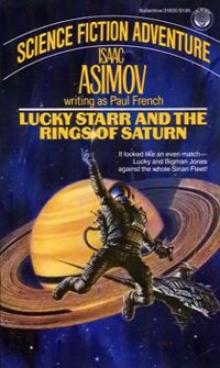 Lucky Starr And The Rings Of Saturn ls-6
Lucky Starr And The Rings Of Saturn ls-6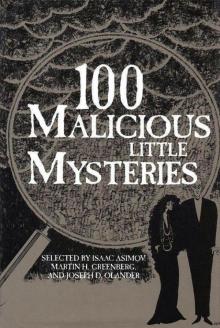 100 Malicious Little Mysteries
100 Malicious Little Mysteries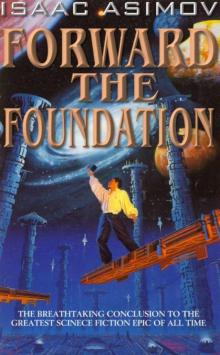 Forward the Foundation f-2
Forward the Foundation f-2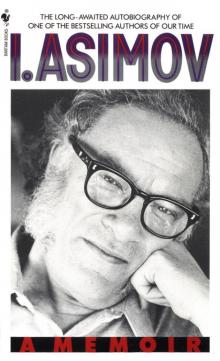 I.Asimov: A Memoir
I.Asimov: A Memoir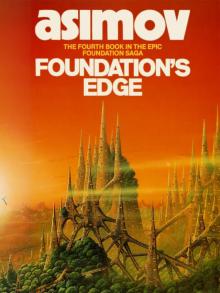 Foundation's Edge f-6
Foundation's Edge f-6 Lucky Starr and the Pirates of the Asteroids ls-2
Lucky Starr and the Pirates of the Asteroids ls-2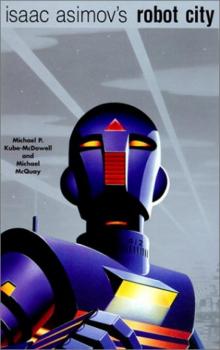 Robot City 1 & 2
Robot City 1 & 2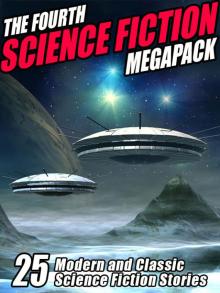 The Fourth Science Fiction Megapack
The Fourth Science Fiction Megapack Asimov’s Future History Volume 16
Asimov’s Future History Volume 16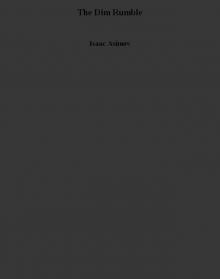 The Dim Rumble
The Dim Rumble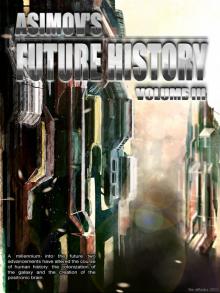 Asimov's Future History Volume 3
Asimov's Future History Volume 3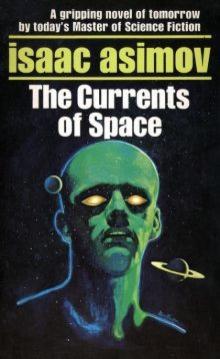 The Currents Of Space te-3
The Currents Of Space te-3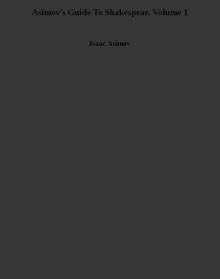 Asimov’s Guide To Shakespear. Volume 1
Asimov’s Guide To Shakespear. Volume 1 Asimov’s Future History Volume 13
Asimov’s Future History Volume 13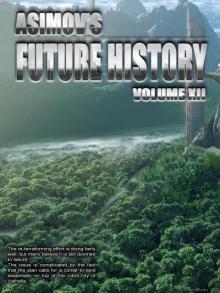 Asimov’s Future History Volume 12
Asimov’s Future History Volume 12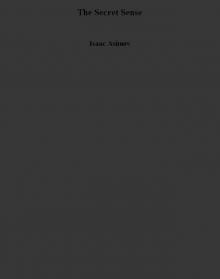 The Secret Sense
The Secret Sense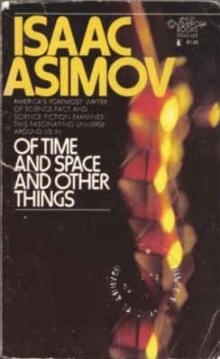 Of Time and Space and Other Things
Of Time and Space and Other Things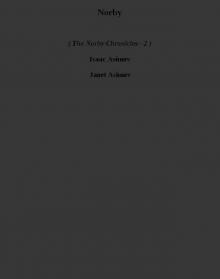 Norby tnc-2
Norby tnc-2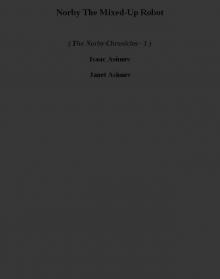 Norby The Mixed-Up Robot tnc-1
Norby The Mixed-Up Robot tnc-1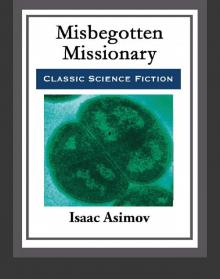 Misbegotten Missionary
Misbegotten Missionary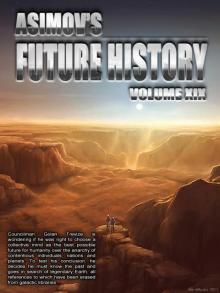 Asimov’s Future History Volume 19
Asimov’s Future History Volume 19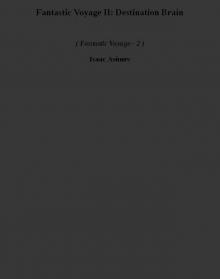 Fantastic Voyage II: Destination Brain fv-2
Fantastic Voyage II: Destination Brain fv-2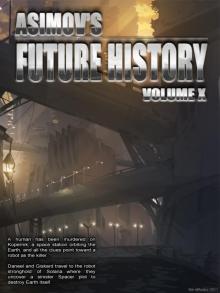 Asimov’s Future History Volume 10
Asimov’s Future History Volume 10 Asimov's Future History Volume 2
Asimov's Future History Volume 2 Feeling of Power
Feeling of Power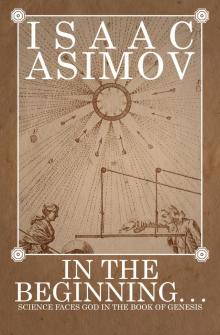 In the Beginning
In the Beginning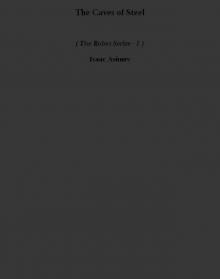 The Caves of Steel trs-1
The Caves of Steel trs-1 Asimov's Future History Vol 2
Asimov's Future History Vol 2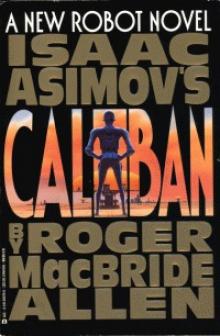 Caliban c-1
Caliban c-1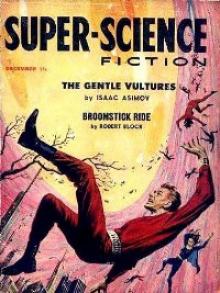 The Gentle Vultures
The Gentle Vultures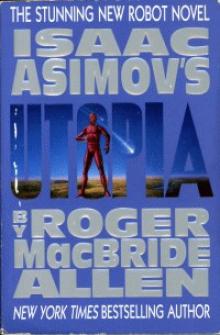 Utopia c-3
Utopia c-3 Prelude to Foundation f-1
Prelude to Foundation f-1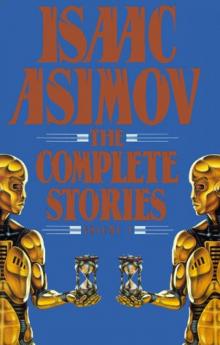 Short Stories Vol.1
Short Stories Vol.1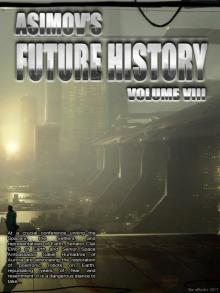 Asimov’s Future History Volume 8
Asimov’s Future History Volume 8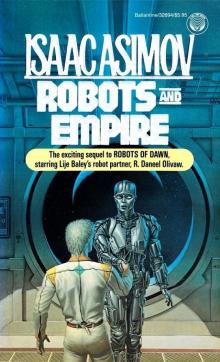 Daneel Olivaw 4 - Robots and Empire
Daneel Olivaw 4 - Robots and Empire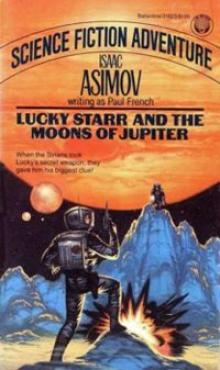 Lucky Starr The And The Moons of Jupiter ls-5
Lucky Starr The And The Moons of Jupiter ls-5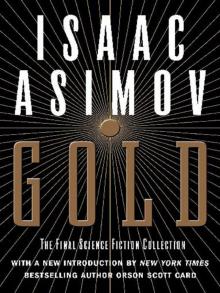 Gold
Gold Asimov’s Future History Volume 4
Asimov’s Future History Volume 4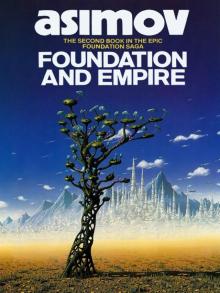 Foundation and Empire f-4
Foundation and Empire f-4 Potential
Potential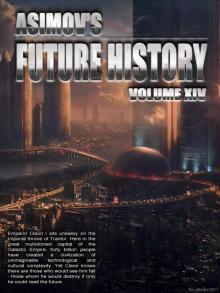 Asimov’s Future History Volume 14
Asimov’s Future History Volume 14 Asimov’s Future History Volume 7
Asimov’s Future History Volume 7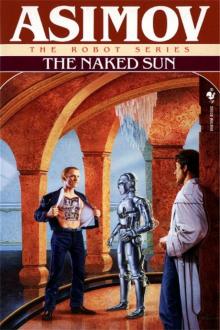 Daneel Olivaw 2 - The Naked Sun
Daneel Olivaw 2 - The Naked Sun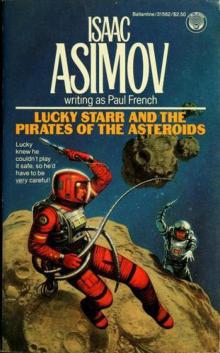 Lucky Starr and the Pirates of the Asteroids
Lucky Starr and the Pirates of the Asteroids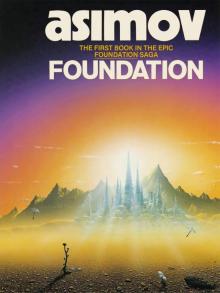 Foundation f-3
Foundation f-3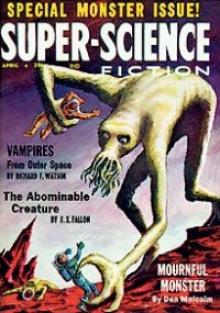 All the Troubles of the World
All the Troubles of the World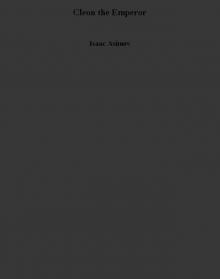 Cleon the Emperor
Cleon the Emperor Asimov's Future History Volume 5
Asimov's Future History Volume 5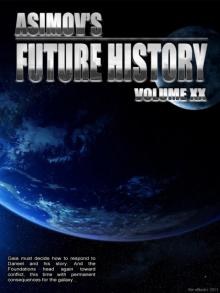 Asimov’s Future History Volume 20
Asimov’s Future History Volume 20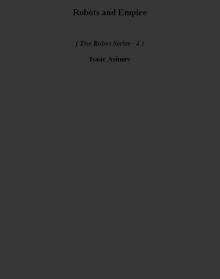 Robots and Empire trs-4
Robots and Empire trs-4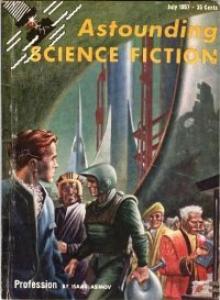 Profession
Profession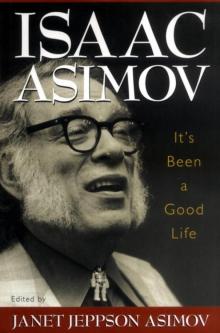 It's Been a Good Life
It's Been a Good Life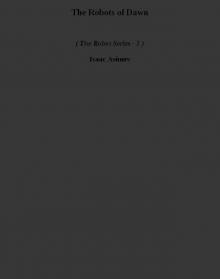 The Robots of Dawn trs-3
The Robots of Dawn trs-3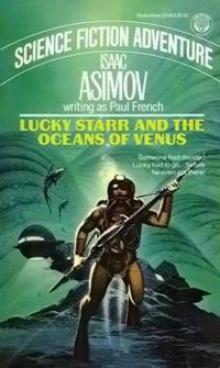 Lucky Starr And The Oceanf Of Venus ls-3
Lucky Starr And The Oceanf Of Venus ls-3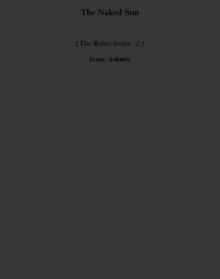 The Naked Sun trs-2
The Naked Sun trs-2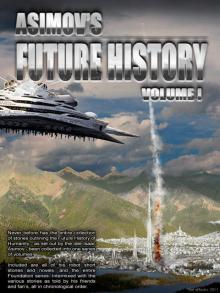 Asimov's Future History Volume 1
Asimov's Future History Volume 1